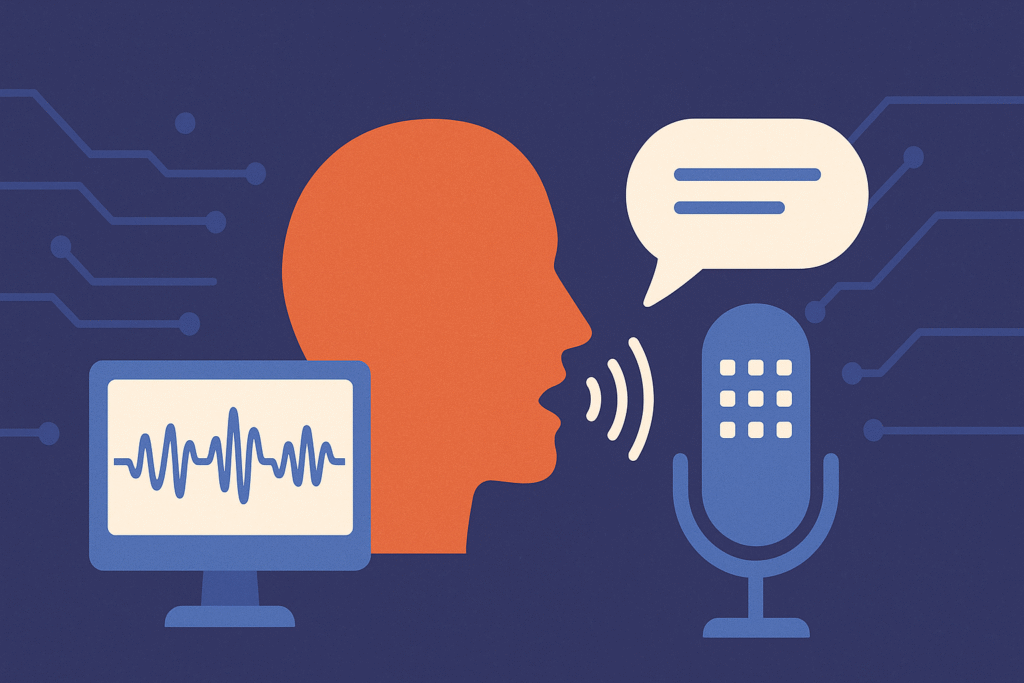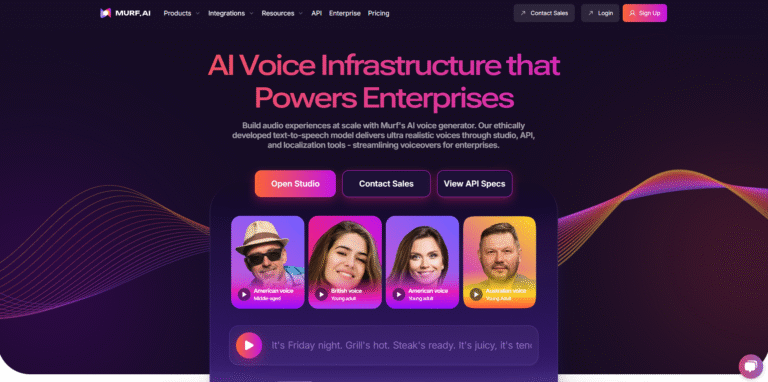Synthetic voices are no longer futuristic concepts—they’re here and transforming how we play and learn. Powered by AI, these voices sound strikingly real. They’re now used in video games, classrooms, and online learning platforms to make experiences more immersive, accessible, and affordable.
In this post, we’ll explore how synthetic voices are being used in gaming and education, with real examples to show how fast this technology is evolving—and how it’s making a real impact.
What Are Synthetic Voices?
Synthetic voices are computer-generated voices made using artificial intelligence. They’re built by training AI models on real human speech. This helps the software learn how to talk in a natural, human-like way.
Compared to old-school robotic voices, today’s synthetic voices are much smoother and more expressive. Companies like ElevenLabs, Replica Studios, and Resemble.ai are leading the way in making them sound incredibly real.
Unlike traditional text-to-speech tools that sounded monotone or flat, modern synthetic voices can now convey emotion, mimic accents, and even replicate individual voices using voice cloning. These improvements are opening doors across industries—especially gaming and education.
How Synthetic Voices Improve Gaming
1. More Dynamic Characters
In many games, characters have long dialogues. Recording voice lines for every possible path a player might take can be expensive. Synthetic voices help solve this problem.
Example:
Game developers now use tools like Replica Studios to create voices for non-player characters (NPCs). These voices can express emotions, change tones, and even speak multiple languages. It allows smaller game studios to build richer storylines without hiring large voice acting teams.
This not only cuts costs but also enables developers to make more ambitious, interactive storylines—like games where characters speak unique responses depending on the player’s actions.
2. Real-Time Storytelling
Imagine a game that reacts to your choices with new, spoken lines—without delays. With AI-generated speech, this is now possible.
Example:
Companies like Inworld AI are building characters that talk with players in real time. These characters don’t just follow a script—they respond based on the conversation. This makes gameplay more unpredictable and personal.
This is especially powerful in open-world games or role-playing games, where the story is shaped by player input. Dynamic voice output enhances immersion without sacrificing scalability.
3. Better Accessibility
Games should be fun for everyone. Synthetic voices help players who might struggle with reading or visual impairments by reading out menus, text, or dialogues.
They also help with localization. Instead of translating and recording new voiceovers for every language, developers can use AI voices to do the job quickly and efficiently. It makes global releases faster, and players can enjoy games in their native language with natural-sounding speech.
How Synthetic Voices Help in Education
1. Smarter Language Learning
Learning a new language often means repeating words and listening to how they’re spoken. Synthetic voices make this easier.
Example:
Apps like Duolingo use synthetic voices to teach correct pronunciation. Learners can hear the same word spoken clearly, multiple times. This builds better listening skills and improves speech faster than static text alone.
You can also create role-play scenarios with AI voices—where students practice dialogues in realistic situations, like ordering food or asking for directions. This kind of contextual learning boosts engagement.
2. Turning Text into Speech
For many students, listening to material helps them learn faster—especially those with dyslexia or attention challenges.
Example:
Tools like Murf.ai and Speechify let users convert lessons, books, or articles into speech. This helps students follow along while reading or simply listen on the go, making content more accessible and flexible for all types of learners.
It also supports independent learning. Students can review content at their own pace, reinforcing understanding without relying solely on teachers or tutors.
3. AI Tutors and Learning Guides
Some online platforms now offer AI assistants who speak with synthetic voices. These virtual guides can answer questions, explain lessons, or help review topics.
Example:
Some EdTech platforms use AI-powered tutors that speak naturally and are available 24/7. This is great for remote learners or students who need extra help outside classroom hours.
They can also provide multilingual support, breaking language barriers and helping students in diverse environments feel included.
How Developers and Educators Can Get Started
If you’re a game developer or educator interested in using synthetic voices, there are many tools available:
- Replica Studios: Create emotional, game-ready character voices.
- Resemble.ai: Clone your voice or create new synthetic voices with emotion controls.
- Murf.ai: Great for presentations, e-learning, and explainer videos.
- Veritone’s guide on how to create a synthetic voice offers a step-by-step overview of the process.
Many platforms offer free trials or usage-based pricing, so it’s easy to experiment without a huge investment.
Ethical Considerations
Of course, synthetic voices come with their share of ethical questions.
- Voice Cloning Risks: AI can now copy real voices. This raises concerns about scams and deepfakes.
- Impact on Voice Actors: Some worry that synthetic voices could replace human jobs.
- Consent and Rights: If someone’s voice is cloned, who owns it?
Thankfully, steps are being taken. Some platforms now watermark AI voices to prove they’re not real. Others require permission before cloning a voice. For more on this, see UNESCO’s guide on ethical AI in education.
Voice creators and companies must follow ethical practices, including voice licensing, transparent disclosure, and respecting voice actor rights.
The Future of Synthetic Voices
We’re only beginning to see what synthetic voices can do. In the next few years, we’ll likely see:
- Real-time translation with synthetic dubbing in global apps and games
- Personal AI companions with fully customized voices
- Fully interactive virtual classrooms with lifelike instructors and assistants
- Entertainment experiences where your favorite characters can speak directly to you in your language
As the technology becomes cheaper and more accessible, it will continue to influence how we communicate, learn, and play.
Final Thoughts
Synthetic voices are more than just a tech trend. They’re shaping how we interact with stories, lessons, and digital environments. In gaming, they bring characters to life. In education, they support learners in new and meaningful ways.
Used ethically and creatively, they’re a powerful tool—and they’re here to stay.
If you’re looking for a Voice Generator, click here




